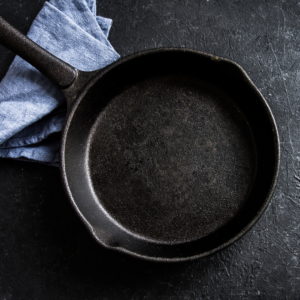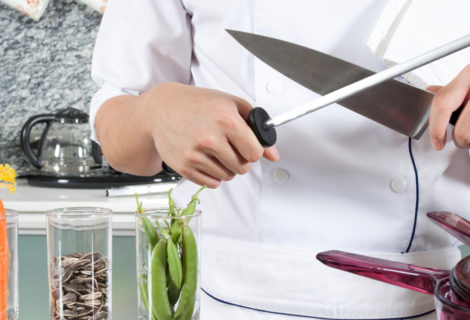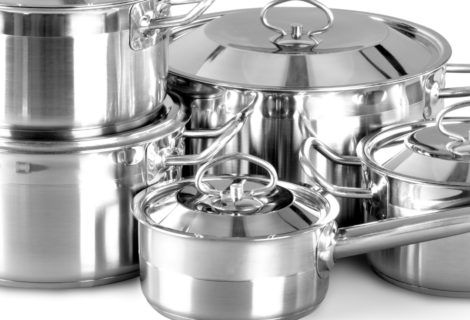Kitchen Staples for the Home Cook (Cast Iron)

Continuing the the equipment list for our kitchen needs (see Pantry Staples for the Home Cook part 1), let’s talk about Cast Iron. Again, this is a subject worthy of it’s own blog as there is a lot to cover, specifically with the care. A “well seasoned” cast iron can be, and has been handed down through generations. There are many Youtube videos that go over and explain the process and proper care. From topics like “cleaning the rust off a cast iron pan”, to “how to season a new cast iron”. I encourage you to watch a few methods as they can vary slightly by person, but here is a few basics of care and cooking.
How to Season a Cast Iron:
When you purchase a new cast iron pan, doesn’t matter what purpose you intend to use it for, unless it has an enamel finish on the inside and outside of the pan, you will need to season it. What does that mean? The term “well seasoned” means to build up layers, over time, of fat which hardens, creating a natural non-stick surface. The type of fat you use, again varies based on the person you talk to, but we have found that using vegetable shortening is the best for both seasoning and storing. Shortening is best because of it’s high smoke point, and while I’ve been told that flax seed oil creates a harder surface, it tends to chip and flake off, removing the non stick surface and leaving room for bacteria growth in the porous surface.

New pans from the store should already have a seasoning from the factory, but in case they don’t, start by washing your cash iron with hot soapy water and rinse well (if it is an older pan with rust, scrub it with steel wool to break up and remove the old finish).
- Preheat oven to 500*
- After washing pan, use stove on low heat to burn off any water and to open the pores of the metal
- Apply a THIN layer of preferred oil and wipe out excess with a lint free rag (we use an old bandana or cotton tee shirt) and do not let the oil smoke at this point.
- Place oiled pan upside down in preheated oven and bake until you can smell the burning smoke (about 45 minutes).
- Turn off oven, leaving pan in there to cool down at least 2 hours, or overnight.
Repeat this process at least 3 times before using a new pan (or freshly scrubbed pan). From here, you can “season” the pan by sauteing carrots, onions, and celery with a pinch of Kosher salt. Repeat the steps above with the exception of using soap to wash.
The reason you want a lint free rag is so those fibers do not get trapped in the oxidized layers of oil, this is also the same reason you want a thin layer of oil, over time, those thick layers and fibers can gob up creating chips and cracks which can hold bacteria.
How To Clean Cast-iron:
There are two ways to clean your cast-iron, it just depends on if you are willing to loose the flavor of the aromatics that you cook with, or not. If you want to keep the those flavors, you can simply scrub your warm pan by using the following items:
- Kosher salt, damp sponge and tongs. Using the tongs to hold the damp sponge with the Kosher salt, making a paste, scrubbing around the pan to pic up any burnt on food debris until you have a smooth surface.
- Plastic Scrapers. Made specifically for cast-iron pans, these are great for scraping stuck on foods (use on a cool pan to avoid melting the scraper).
- Chain-mail Scrubber. Again, specifically made for care and cleaning of cast-iron pans. Simply scrub pan under warm running water.
If you want to remove the flavor of the aromatics that you’ve previously cooked with, you can use a mild dish detergent, warm water and a nylon scrub pad. The idea that you should “never use soap on cast-iron” is an antiquated one in that manufactures no longer use Lye in their dish soaps.
NEVER PUT CAST-IRON, OR ANY PANS IN THE DISHWASHER

Note: It is best to avoid cooking with liquids in your cast iron until a good “season” is created, which can take months, or years (depending on your regular use). The liquids from soups, stews, and sauces can break down your season and make the non-stick surface flake. I suggest investing in an enameled cast-iron (I’ve found Lodge to have both better reviews, better Lifetime warranty, and cheaper than Le Cruset)






Recent Comments